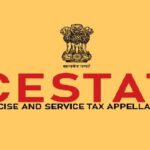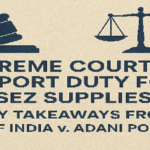
EPCG authorisation/scheme is a very lucrative and gainful scheme if it is used rightly by the eligible company/firm. In our varied sectors of experience, we have observed that due to convolutions in the computation and maintenance of Average Export Obligation under the EPCG scheme, many companies had to return duty saved under the EPCG authorization and could not get benefits of the scheme and also had to pay huge interest @ 15% /18% as applicable thereupon for regularization and to exit from the scheme.
Let us understand what are those intricacies and what points need to be taken care of while computing or in the maintenance of Average Export Obligation (AEO) in the EPCG Authorization scheme in India.
As per the policy, the Authorisation holder is required to maintain the Average Level of exports achieved in the preceding three licensing years for the same and similar products, within the overall EO period (including the extended period). Such an average would be the arithmetic mean of export performance in the preceding 3 licensing years for the same and similar products.
Computation of annual average export obligation under EPCG
- In respect of EPCG authorizations issued during a licensing year, while calculating Average Export Obligation, specific Export Obligation undertaken for same and similar products under EPCG Authorizations in the preceding 3 years shall not be taken into account.
- If an applicant has been in existence for more than 3 years, the exports in each of the past 3 years (even if for some years, it may be zero) are aggregated and the aggregate export is divided by 3.
- If an applicant has been in existence for less than 3 years, the denominator in the above calculation will be the number of years and not 3.
- Exemption from maintenance of Average Export Obligation (AEO): In case of the export of goods relating to the following the EPCG authorization holder, average export obligation shall not be required to maintained: –
| Handicraft, | floriculture & horticulture, |
| Handlooms, | Poultry, viticulture |
| Cottage and tiny sectors, | Sericulture |
| Agriculture, | Carpets |
| Aqua-culture (including fisheries), Pisciculture, | Coir and |
| Animal husbandry, | Jutes |
However, this exemption from maintenance of average export obligation shall not be allowed for import of fishing trawlers, boats, Ships and other similar items.
Maintenance of annual average export obligation under EPCG
Authorization holders are required to maintain the Average Level of exports. The Excess export done towards the Average Export Obligation (AEO) during a year can be used to offset any shortfall in the average EO done in the other year(s) of the EO period or block period as the case may be, provided average EO imposed is maintained on the overall basis within the block period or the EO period as applicable.
Relief from maintenance of average export obligation where total export in that sector/ product group has declined by more than 5%
For the sectors/product groups that witnessed more than 5% of decline in the relevant year as compared to preceding year, Govt. has given relief to them from maintaining of average export obligation to that extent of reduction (i.e., AEO may be reduced proportionate to reduction in export of that particular sector).
However, in case the export decline is continuous over consecutive years, the base year for the calculation of eligibility and calculation of the reduction in average export obligation will be taken as the year after which the exports have shown a continuous decline.
Yearly circulars issued by the DGFT in this regard and listed such groups/products showing the percentage decline in exports during the relevant years compare to previous years, accordingly, exporters may take relief from maintenance of average export obligation. List of circulars issued by the DGFT are given hereunder –
| Financial Year | Compared Year | Policy Circular no. | Date |
| 2014-15 | 2013-14 | 04/2015-20 | 16.12.2015 |
| 2015-16 | 2014-15 | 01/2015-20 | 26.07.2016 |
| 2016-17 | 2015-16 | 03/2015-20 | 21.11.2017 |
| 2017-18 | 2016-17 | 18/2015-20 | 31.01.2019 |
| 2018-19 | 2017-18 | 31/2015-20 | 26.02.2020 |
| 2019-20 | 2018-19 | 37/2015-20 | 10.09.2021 |
| 2020-21 | 2019-20 | 37/2015-20 | 10.09.2021 |
| 2021-22 | 2020-21 | 44/2015-20 | 17.11.2022 |
This relief which we have mentioned above is for the products/ goods and the DGFT has not listed any services in it. However, recently vide public notice No.53/20215-20 dated 20th January 2023 one-time relaxation from maintenance of average export obligation provided by the Govt. to specified EPCG authorizations holder, and accordingly for the years 2020-21 and 2021-22, no average export obligation is required to be maintained for EPCG authorizations issued for Hotel, Healthcare, and educational sectors.
Some more specific points regarding average export obligation (AEO) in case of clubbing of authorisations and EOU/SEZ unit are also given hereunder :-
- In case of Clubbing of the authorisations, Average export obligation for clubbed authorization would be the highest of the average export obligation endorsed on the individual authorizations so clubbed.
- If a standalone EOU or SEZ unit wishes to de-bond from EOU/SEZ to EPCG scheme, there shall be no requirement for maintenance of the average export obligation and the unit shall be required to maintain only a specific export obligation equivalent to 6 time of the proportionate duty saved amount of the depreciated value of capital goods for which the authorization has been obtained.
- In case one unit of company opts to de-bond from EOU to EPCG scheme, while other units are DTA units, then the average export obligation in respect of authorisations issued to the company (other than debonding unit) shall remain unchanged and the average EO, after de-bonding of the unit, shall be fixed by excluding the exports made by the debonding unit from the total export of the company, which runs concurrently for all units of the company.
The above-mentioned points should be taken into consideration while calculating the Average Export Obligation under the EPCG Scheme in India.





